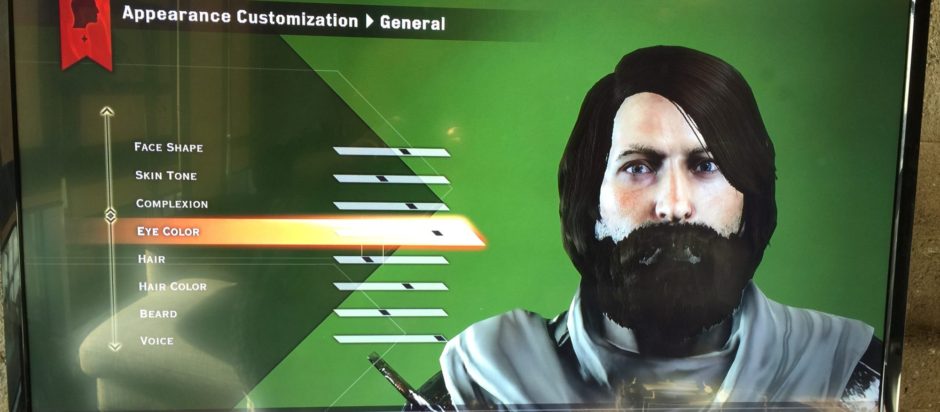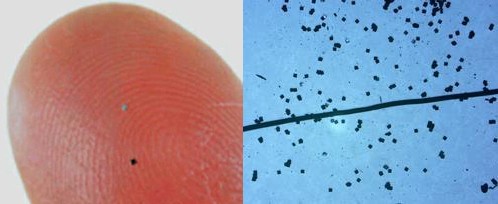A collection of supplementary readings and resources for my presentation, “Locative Media and Responsive Environments.”
Pervasive Computing
- Rise of the Network Society — Manuel Castells’ excellent book about the economic and cultural implications of pervasive computing. Writing about nanotech, Castells notes that “…experimental programs seem to indicate that molecular electronics is a possible avenue to overcoming the limits of increasing density in silicon chips, while ushering in an era of computers 100 billion times as fast as a Pentium microprocessor; this would make it possible to pack the computing power of a hundred 1999 computer workstations into a space the size of a grain of salt. Based on these technologies, computer scientists envisage the possibility of computing environments where billions of microscopic information-processing devices will be spread everywhere ‘like pigment in the wall paint.’ If so, then computer networks will be, materially speaking, the fabric of our lives.” (53)
- Cell Phone Usage Worldwide — There are over 2.1 billion cell phones in the world today.
- Hitachi RFID dust — These tiny RFID chips look like powder, measuring just 0.05 millimeters (0.002 inches) by 0.05 millimeters (0.002 inches), and are thin enough to be embedded in pieces of paper.
The Semantic Web
- Tim Berners-Lee: “I have a dream for the Web [in which computers] become capable of analyzing all the data on the Web – the content, links, and transactions between people and computers. A ‘Semantic Web’, which should make this possible, has yet to emerge, but when it does, the day-to-day mechanisms of trade, bureaucracy and our daily lives will be handled by machines talking to machines. The ‘intelligent agents’ people have touted for ages will finally materialize.” (Weaving The Web, ch. 12)
- TED Talk: Tim Berners-Lee on the next Web of open, linked data — “20 years ago, Tim Berners-Lee invented the World Wide Web. For his next project, he’s building a web for open, linked data that could do for numbers what the Web did for words, pictures, video: unlock our data and reframe the way we use it together.” (TED)
- Linked Data — Tim Berner-Lee’s original article on the subject.
- Cool URIs for the Semantic Web — W3C article on standards for concept and data URI (Universal Resource Identifiers). Abstract: “The Resource Description Framework RDF allows users to describe both Web documents and concepts from the real world—people, organisations, topics, things—in a computer-processable way. Publishing such descriptions on the Web creates the Semantic Web. URIs (Uniform Resource Identifiers) are very important, providing both the core of the framework itself and the link between RDF and the Web. This document presents guidelines for their effective use. It discusses two strategies, called 303 URIs and hash URIs. It gives pointers to several Web sites that use these solutions, and briefly discusses why several other proposals have problems.”
- Related projects and associations: dbPedia, Friend-of-a-Friend (FOAF), SIMILIE, SIOC
Internet of Things
- Shaping Things (.pdf) — A pdf copy of Sterling’s 2005 book wherein he describes the concept of the spime. From the product description: “The future will see a new kind of object—we have the primitive forms of them now in our pockets and briefcases: user-alterable, baroquely multi-featured, and programmable—that will be sustainable, enhanceable, and uniquely identifiable. Sterling coins the term “spime” for them, these future manufactured objects with informational support so extensive and rich that they are regarded as material instantiations of an immaterial system. Spimes are designed on screens, fabricated by digital means, and precisely tracked through space and time. They are made of substances that can be folded back into the production stream of future spimes, challenging all of us to become involved in their production. Spimes are coming, says Sterling. We will need these objects in order to live; we won’t be able to surrender their advantages without awful consequences.” (Amazon.com)
- Spimes and the Future of Artifacts (video presentation) — An entertaining 35 minute presentation elaborating on six key technology trends (RFID, GPS, visual search, CAD, rapid prototyping and “transparent production”) that are changing the way that we relate to objects. He defines a spime as an object that is “plannable, trackable, findable, recyclable, uniquely identified and generates digital histories.” (5:33)
- Flurb #6: Computer Entertainment (text) — A signature Bruce Sterling rant posing as a lecture given to a 2008 SXSW audience by a time traveler from the year 2043. Representative passage: “This is my General Electric Pocket Mediator. This one’s about five years old, it’s a student’s model. Personal mediators are a stable technology in my time, we don’t have to fuss with them much. Unfortunately it doesn’t have full functionality here in 2008, because we don’t have the cloud yet. As soon as I reached here, my Mediator reached out for the cloud to reload its apps and OS… and it tapped into something called “Window-Vista.” Then it just plain gave up. It’s gone completely limp now. There’s nothing left here but this frozen screen-saver pattern.”
- Four Stages of the Internet of Things — Former Wired editor and all-around whiz Kevin Kelly riffs on this article by Tim Berners-Lee to construct a succinct description of what he thinks “the Semantic Web” or “Web 3.0” is all about. In short, his four stages are: 1) Linking computers, 2) Linking documents, 3) Linking the data in (and about) documents, and 4) Linking things.
- The net shapes up to get physical — Guardian article by Sean Dodson. Good general description. Excerpt: “Most people, if they bother to think about it at all, probably view the internet as an agent of profound change. In the 15 years since Tim Berners-Lee invented the world wide web, the life of almost everyone in the industrialised world has been touched by it. But just as many of us are getting to grips with its second stage, the mobile internet, very few are prepared – perhaps even aware – of the third and potentially most revolutionary phase of all: the internet of things.” (guardian.co.uk)
- RFID — Wikipedia article on RFID tags. Includes many interesting examples.
- Organizations: World Wide Web Consortium (W3C), semanticweb.org, IPv6, IPSO Alliance, Zigbee.org, Pachube.com
Responsive Environments
- How smart does your bed have to be, before you are afraid to go to sleep at night? — Rich Gold critiques the notion of the “smart house” in this hilarious and thought-provoking essay. “Can an intelligent house fall in love with the house next door,” asks Gold. “Can they have baby houses? Is an architect a trained “womb” for houses, or more crudely, is an architect how a house makes another house? Does an architect feel like she/he is violating fundamental forces of evolution if she/he does not include the latest new technology in the house she/he next gives birth to? Do you believe in progress? Is a suburban house of today better than a terrace house in London in 1850 which was better than a thatched country cottage in 1700 which was better than the tepees and mud huts that Columbus found in the New World? Is the house that Donald Trump lives in better than the house you live in? If you were an architect and you designed an intelligent house, would the house’s own happiness matter to you? If the couple that bought the house you designed got a divorce, do you think you should be libel for damages?”
- Orchestrating your surroundings — A project proposal for a “smart house”-type environment by by Pau Giner, Carlos Cetina, Joan Fons and Vicente Pelechano.
Imagined Futures/Imagined Presents
- Ubik – A novel by Philip K. Dick treating themes of intelligent environments, resurrection and shifting ontologies. Research only: torrent here.
- Spook Country — A novel by William Gibson about locative media artists and shadowy private intelligence contractors.
See also: Ambient storytelling resources


Pingback: Content management and delivery tools for indie ARG producers | jeff watson
Pingback: ARGs in institutions: museums, libraries, schools, and beyond | jeff watson
Pingback: Ambient storytelling resources | blog.remotedevice.net